Abstract
Purpose:
The objective of this study was to examine the clinical results and effectiveness of resection arthroplasty for correction of lesser toe deformity.
Materials and Methods:
From January 2000 to November 2012, 92 cases of resection arthroplasty for lesser toe deformity were reviewed. Hammer toe was the most common type of deformity, accounting for 44 toes (33 patients). Hallux valgus was the most common comorbid illness. Second toe was the most commonly affected toe and proximal interphalangeal joint was the most common location of resection arthroplasty (69 toes, 75.0%). We also analyzed the alignment of phalanges using the last follow-up weight bearing radiographic image. The analysis included clinical evaluation with American Orthopaedic Foot and Ankle Society (AOFAS) score as well as subjective satisfaction.
Results:
Flexor tenotomy (19 cases) was the most common combined surgery. Floating toe (4 cases) was the most common complication. The last follow-up alignment of phalanges was better than good in 71 toes (77.2%) in anteroposterior view and in 69 toes (75.0%) in lateral view. Sixty one cases (85.9%) resulted in better satisfaction than ‘good’ and the final average AOFAS score was 87.4.
Go to : 
REFERENCES
1.Coughlin MJ., Thompson FM. The high price of high-fashion footwear. Instr Course Lect. 1995. 44:371–7.
2.Coughlin MJ., Dorris J., Polk E. Operative repair of the fixed hammertoe deformity. Foot Ankle Int. 2000. 21:94–104.

3.Harmonson JK., Harkless LB. Operative procedures for the correction of hammertoe, claw toe, and mallet toe: a literature review. Clin Podiatr Med Surg. 1996. 13:211–20.
4.Caterini R., Farsetti P., Tarantino U., Potenza V., Ippolito E. Arthrodesis of the toe joints with an intramedullary cannulated screw for correction of hammertoe deformity. Foot Ankle Int. 2004. 25:256–61.

6.Lehman DE., Smith RW. Treatment of symptomatic hammertoe with a proximal interphalangeal joint arthrodesis. Foot Ankle Int. 1995. 16:535–41.

7.Shirzad K., Kiesau CD., DeOrio JK., Parekh SG. Lesser toe deformities. J Am Acad Orthop Surg. 2011. 19:505–14.

8.Coughlin MJ., Mann RA., Saltzman CL., Anderson RB. Surgery of the foot and ankle. Vol. 1. 8th ed.Philadelphia: Mosby/Elsevier;2007. p. 363–464.
9.Ellington JK. Hammertoes and clawtoes: proximal interphalangeal joint correction. Foot Ankle Clin. 2011. 16:547–58.

10.Mills GP. The etiology and treatment of claw foot. J Bone Joint Surg Am. 1924. 6:142–9.
12.Coughlin MJ. Subluxation and dislocation of the second metatarsophalangeal joint. Orthop Clin North Am. 1989. 20:535–51.
Go to : 
 | Figure 1.(A) On weight bearing anteropos-terior:anteroposterior alignment:angle between distal and proximal phalanx of resection arthroplasty. (B) On weight bearing lateral:lateral alignment:angle between distal and proximal phalanx of resection arthroplasty. |
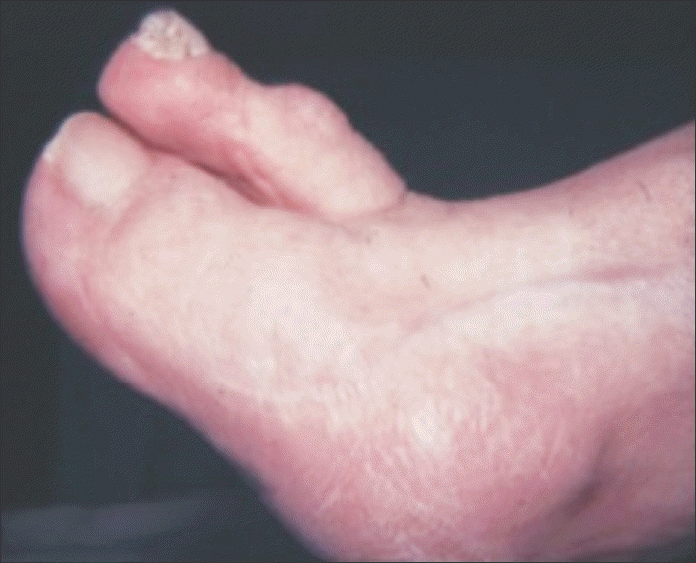 | Figure 3.Floating toe deformity. Pulp of the toe did not contact the ground when the patient was standing. |
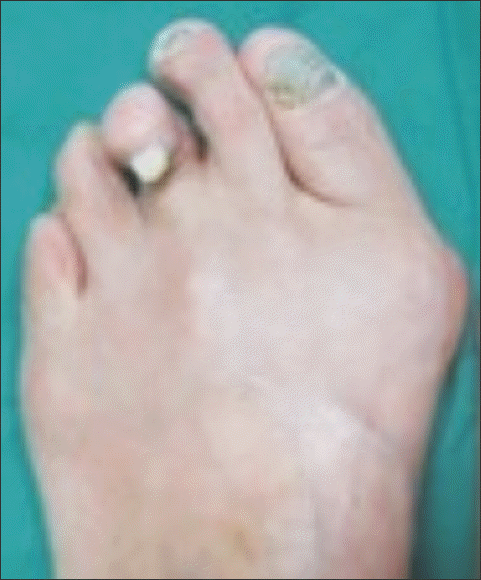 | Figure 4.Reverse mallet toe deformity was developed after correction of mellet toe deformity by resection arthroplasty of distal interphalangeal joint of 3rd toe. |
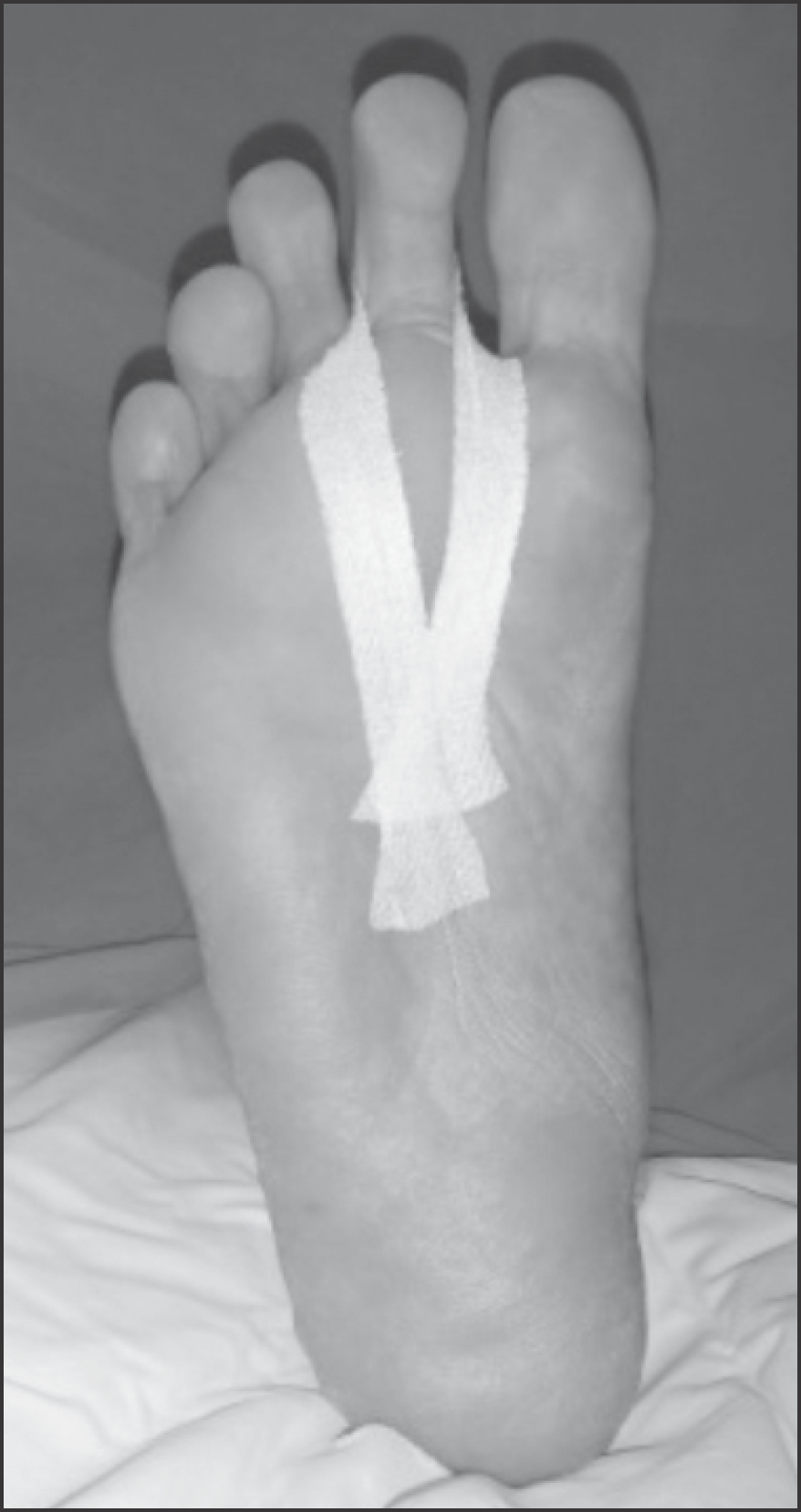 | Figure 7.Taping was applied after resection arthroplasty with mild metatarsophalangeal joint hyperextension. |
Table 1.
Subjective Satisfaction and AOFAS Score
| Number of toes (n=92) | Subjective satisfaction (%) | Mean AOFAS score | |
|---|---|---|---|
| Hammer toe | 44 | 83.9 | 86.3 |
| Claw toe | 7 | 90.9 | 86 |
| Mallet toe | 16 | 76.9 | 85.7 |
| Curly toe | 25 | 100 | 91.6 |




 PDF
PDF ePub
ePub Citation
Citation Print
Print


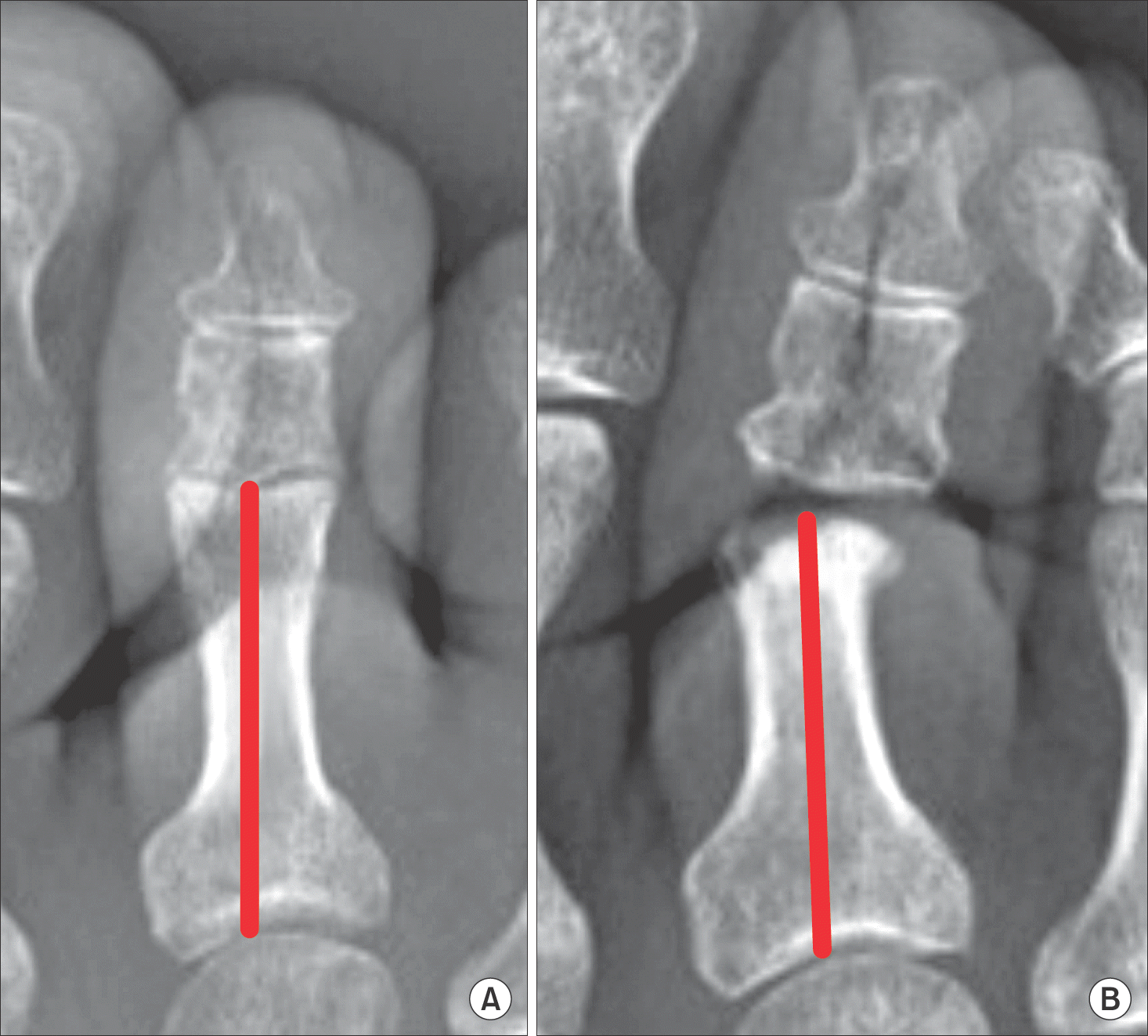
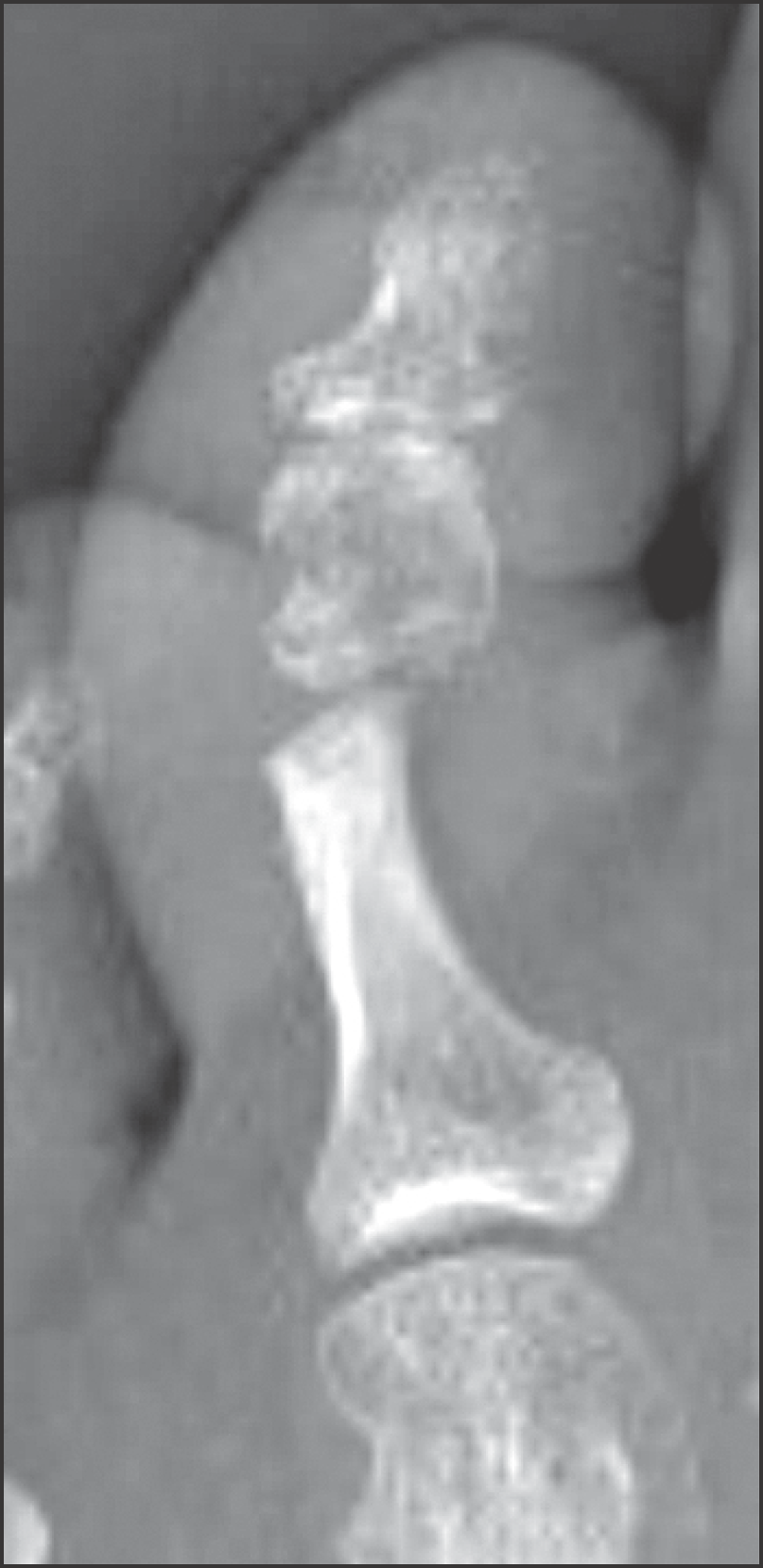
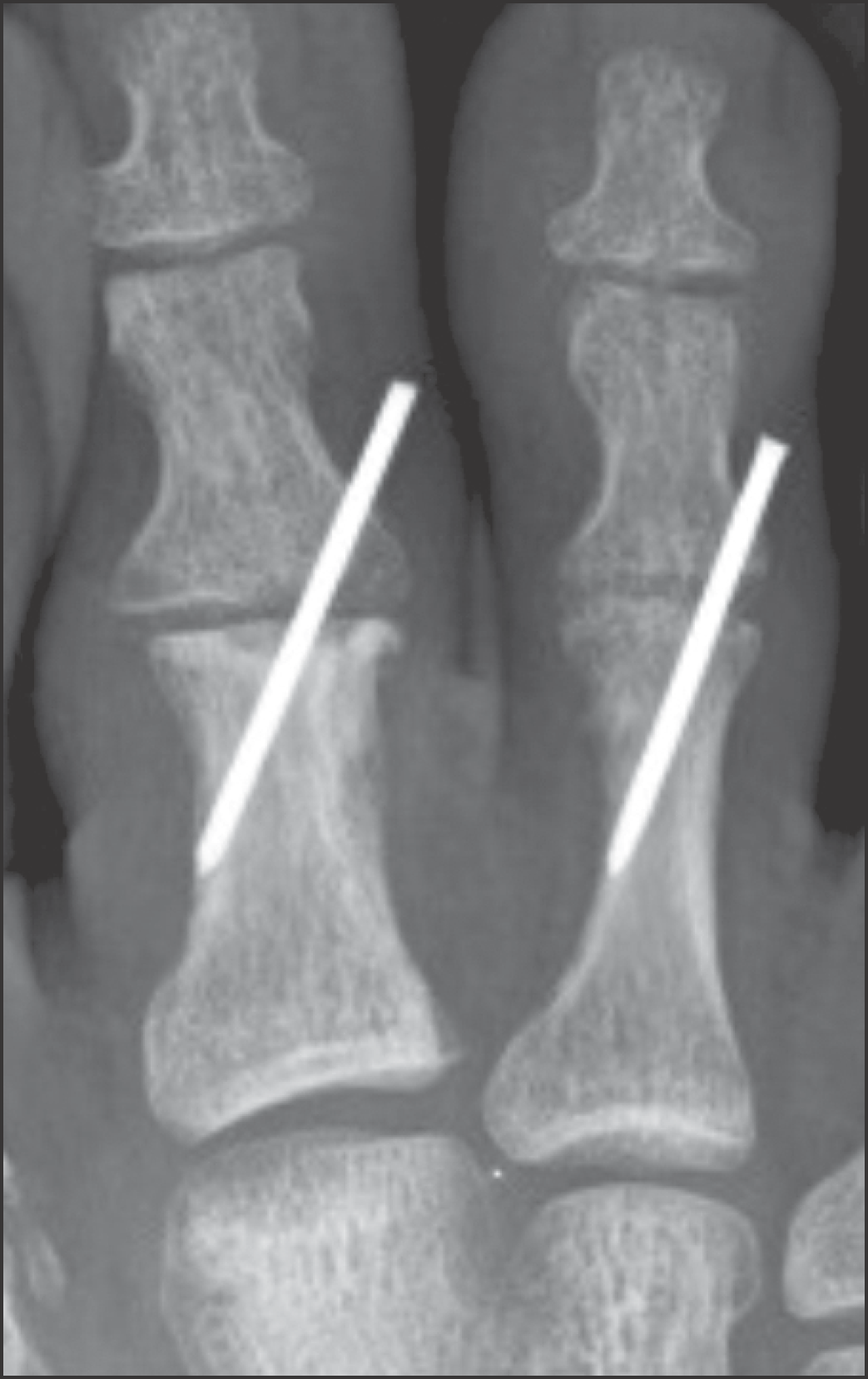
 XML Download
XML Download